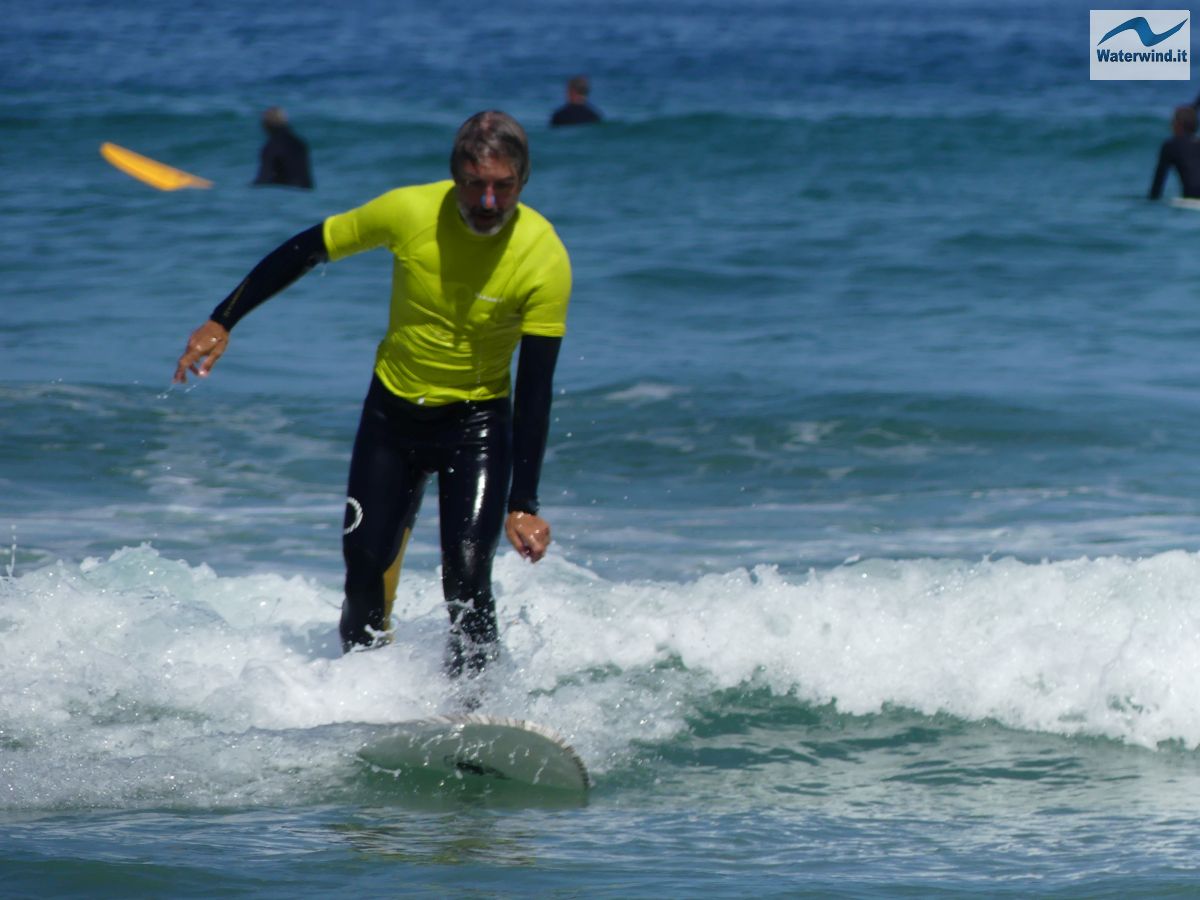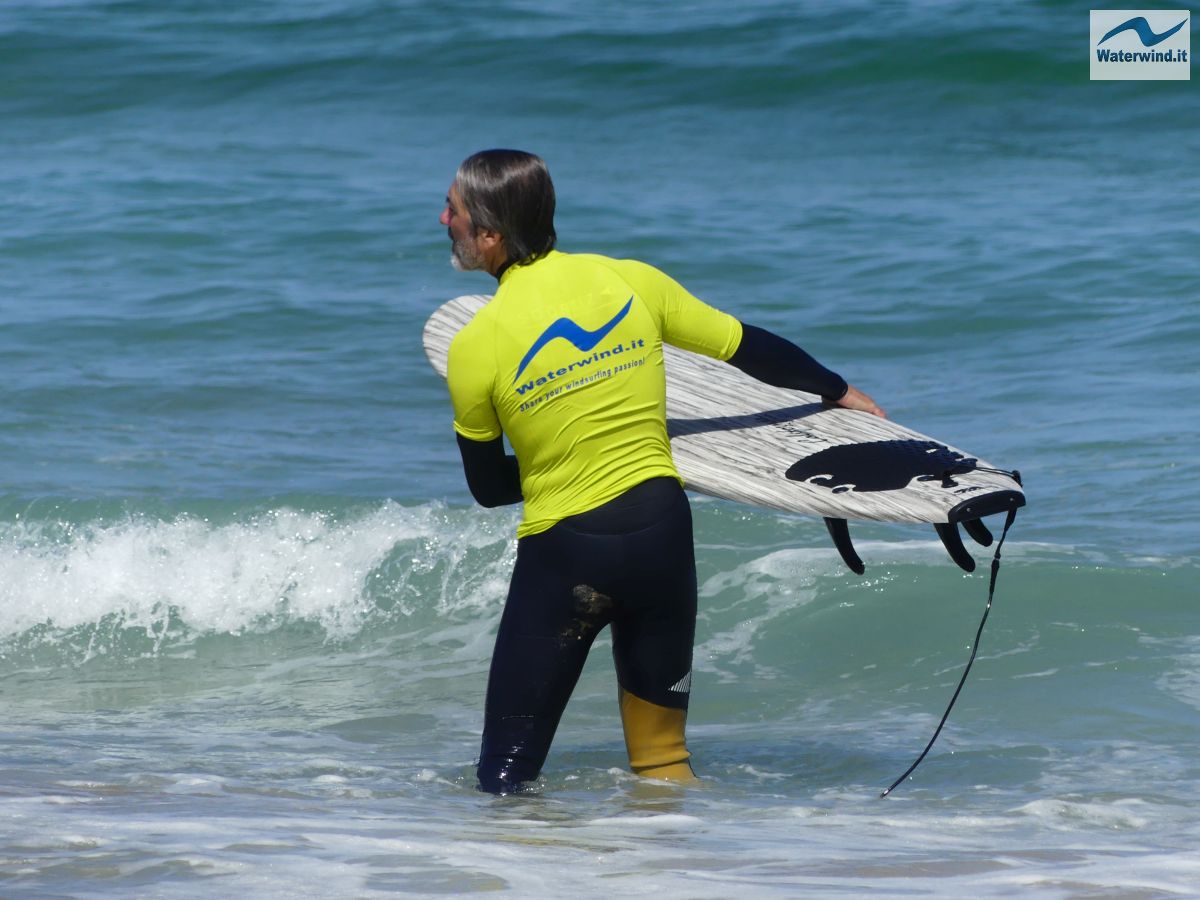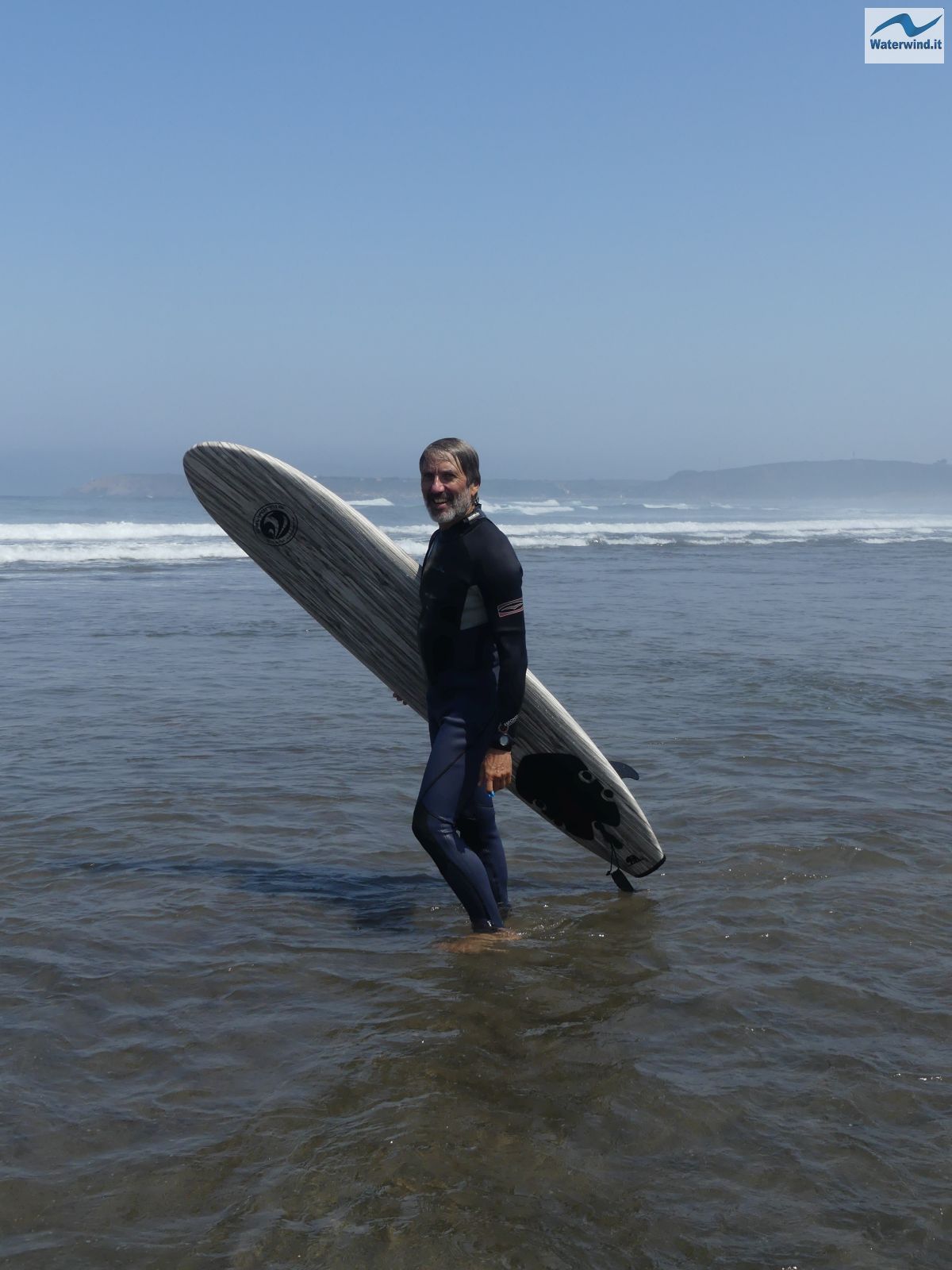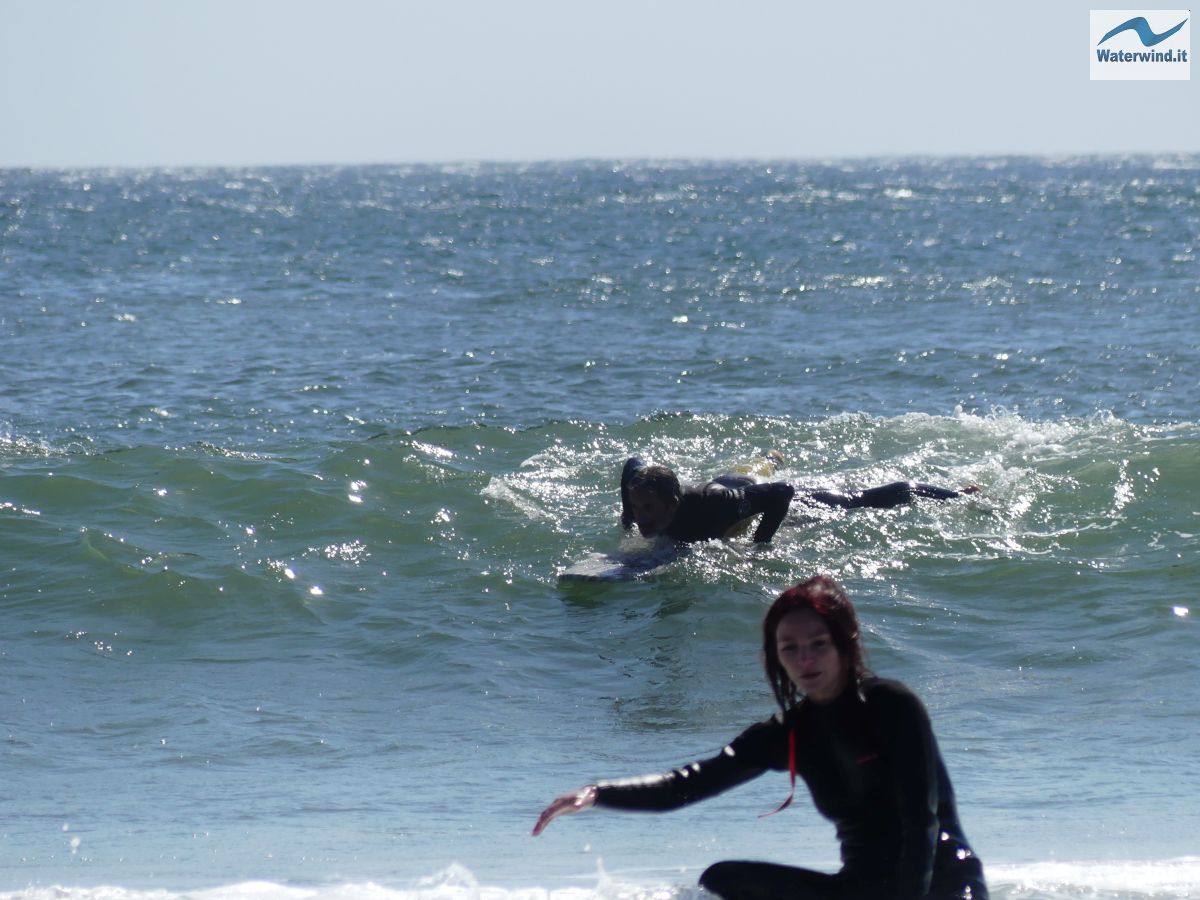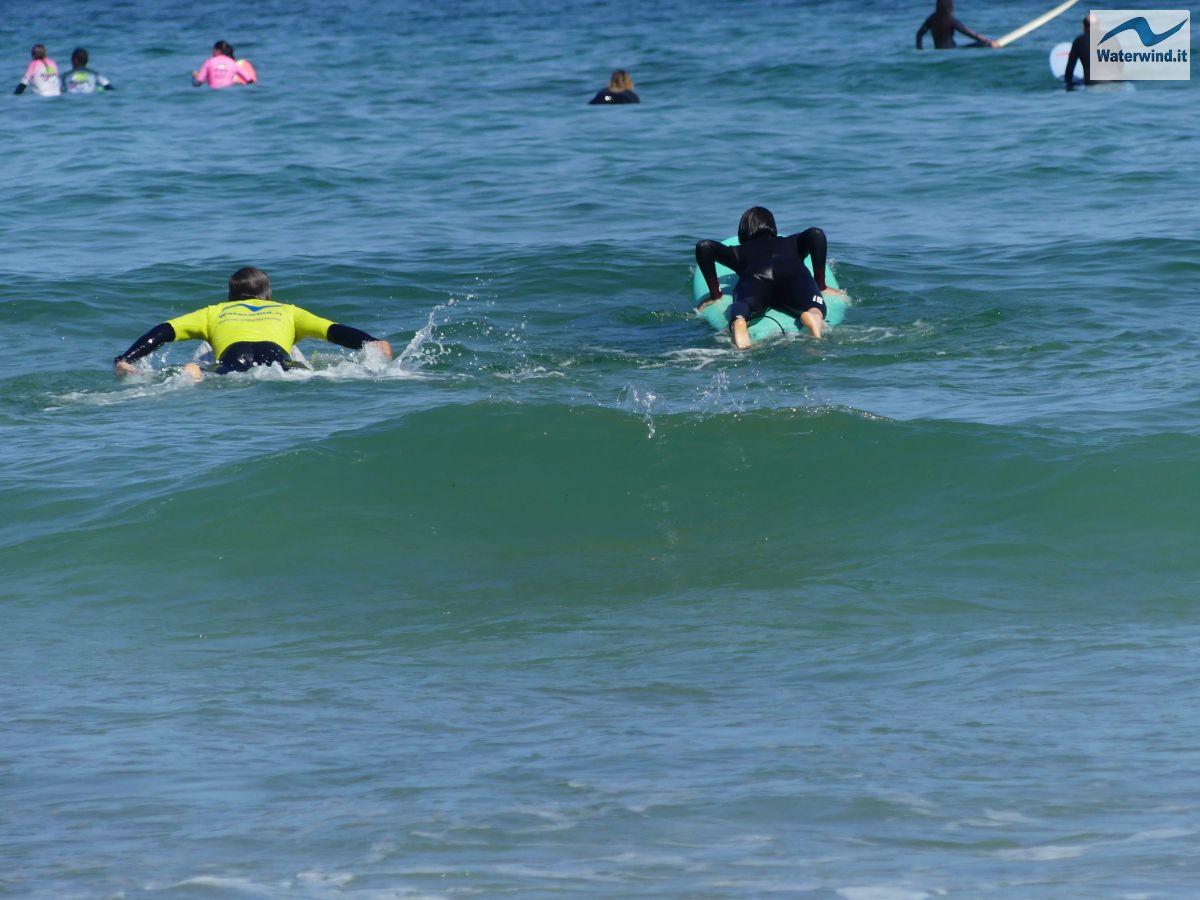The Softboards are the boards with which almost everyone makes his first experiences in this sport. In this article, I will tell you my impressions of the CBC FUN 7'0 Surfboard, by California Board Company.
CBC SOFTBOARD FUN 7'0: test
I have been surfing occasionally for a few years. I have tried surfing in Portugal, England, and Morocco, when I was on holiday. But it has always been for occasional and sporadic sessions. For me, being a windsurfer, it has often been natural to try surfing to exploit the waves, waiting for the best conditions for windsurfing, or after them.
But my assiduous frequentation of Galicia, in Spain, a region that offers beaches and wonderful conditions for surfing, has, finally, led me to buy my first board, to take with me on holiday in Spain, this summer 2024. And, probably, a new passion was born.
As a first board, after having done some rentals and gained some experience, I decided to buy a Softboard. These are boards with a generally generous volume, good length and width, and therefore stability when, having caught the wave, you have to stand up. But, above all, this type of board is distinguished by the foam deck covering, or more generally by soft material on deck. This is essential when you are doing your first sessions, because, typically, beginners are "wiped out" by the waves, due to inexperience; so, they often roll with the board, and can be hit by it. The soft covering of the deck absorbs impacts. In addition, this type of board, generally, has plastic fins, and not resin or carbon ones. And this also makes any hits received less dangerous.
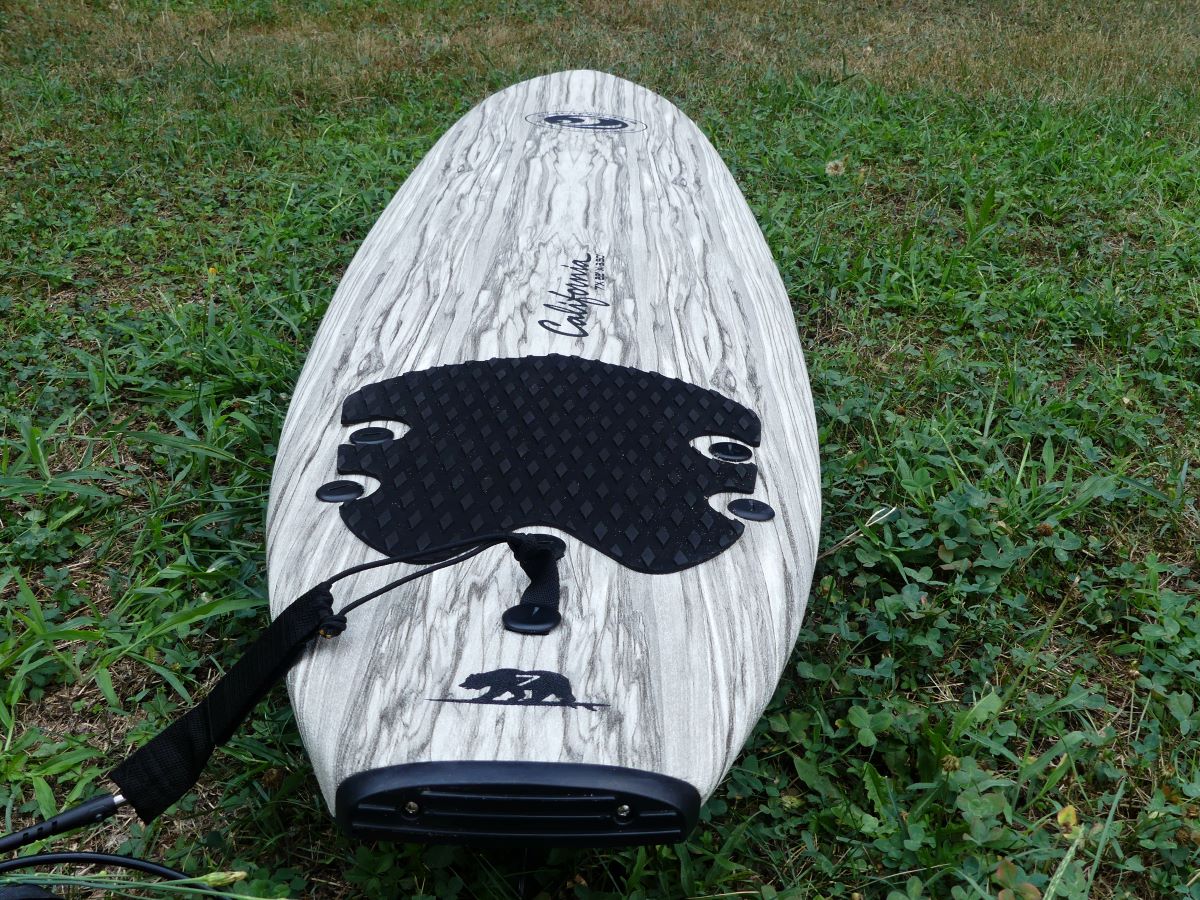
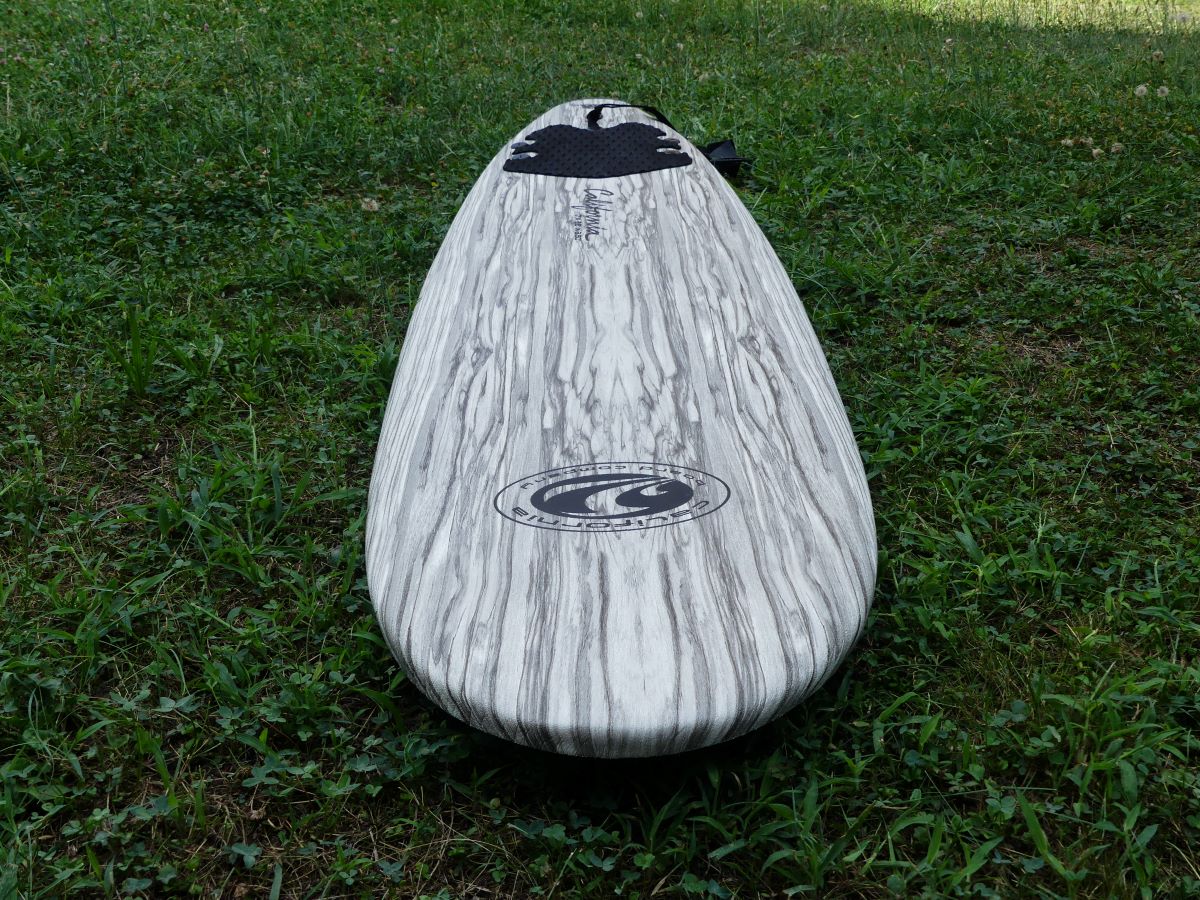
Specifically, I bought a CBC (California Board Company) SOFTBOARD FUN 7'0, a product that turned out to have good performances (quick planing start, good speed, and reasonable stability), but which showed some construction issues. With this board, I set off for Northern Spain.
Board features
Sizes - 84" (7 feet) x 22" x 3.5" (213 cm x 56 cm x 9 cm)
Weigh - 10 lbs. (4,5 kg)
Rider's weigh - Up to 210 lbs. (95 kg)
Volume - 57.24 liters
Construction Features
- 100% waterproof EPS foam core
- 3 wood stringers
- HD polyethylene slick hard bottom
- IXPE/XPE deck skin
- Full top and bottom graphic deck
- Traction pad for grip
- Tri-fin system
Bonus Gear Included
- 3 Surf Fins
- PU Surf Leash
Brand claims:
The 7ft CBC Soft Surfboard is known for its ease in use, its durability, its fun wood graphic that covers the whole top and bottom of the board, and its affordable price! This foam surfboard has a waterproof EPS foam core with 3 built in wood stringers for structure with flexibility, an XPE/IXPE deck skin that hardly needs wax for grip, and a slick polyethylene hard bottom that glides smoothly across the water. It also features an attached traction pad, a protective tail cap; an easy to install and remove tr-fin system; and comes with a CBC surf leash that attached at the ankle with a neoprene padded ankle strap.
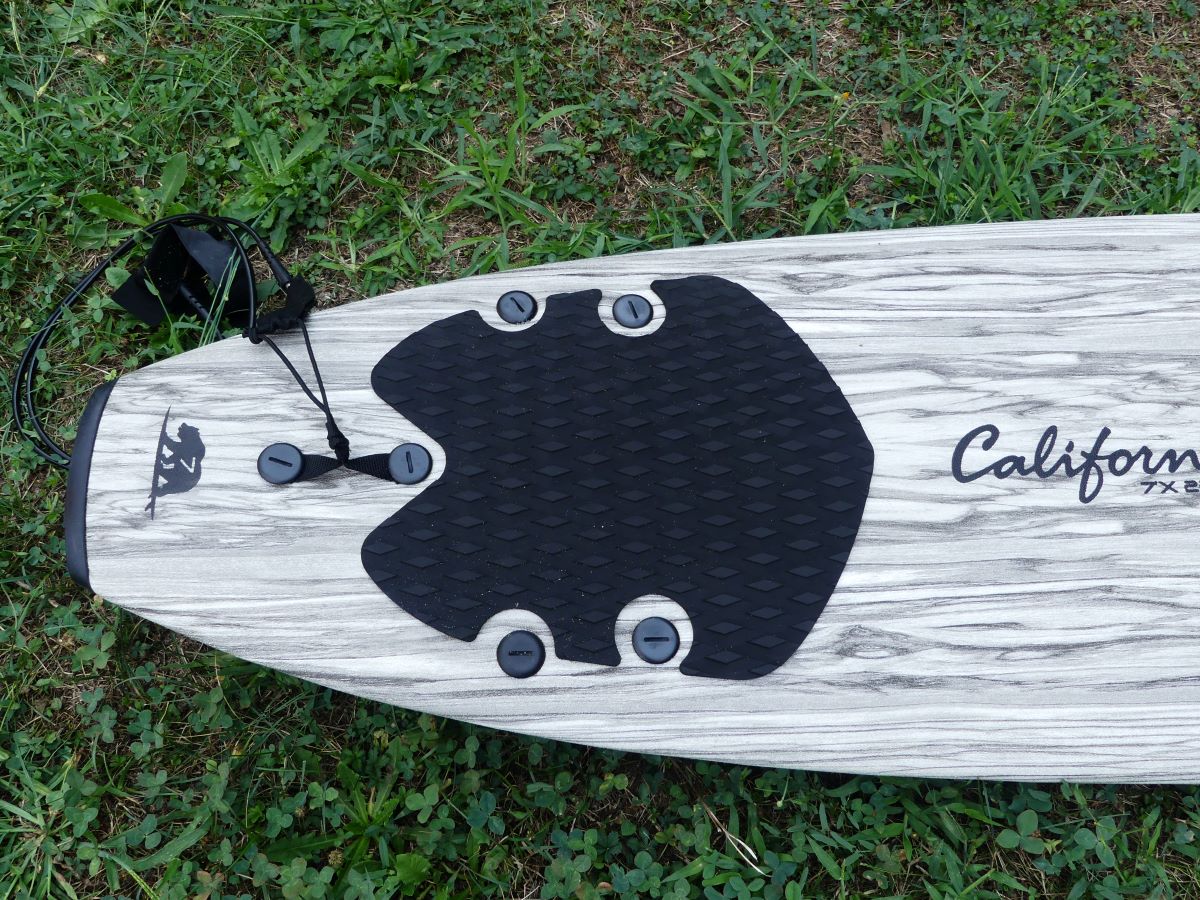
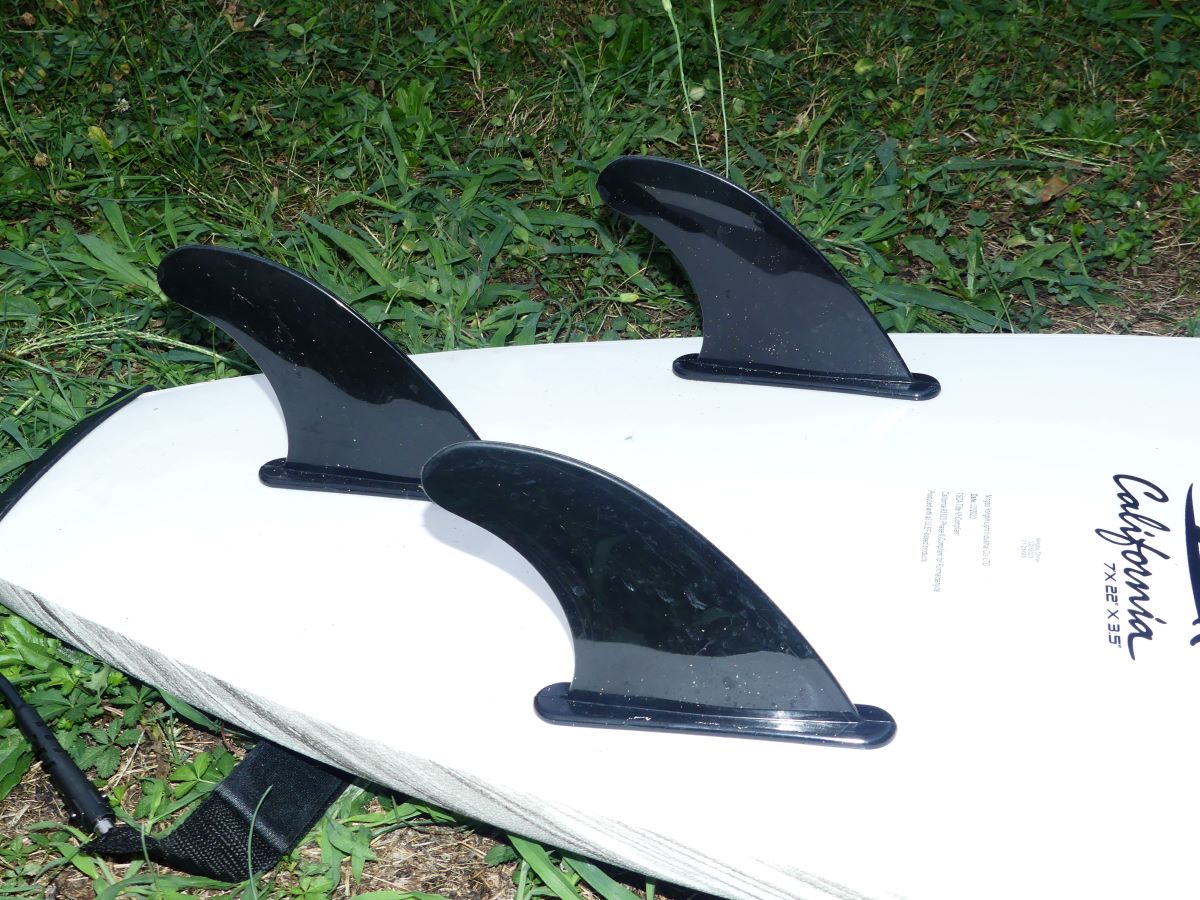
My impressions in the water
The first sessions were done in spots with medium-small waves. The first ever session was in Liencres, in Cantabria, with somewhat foamy waves, but I liked the context of the spot. Then, I tried Salinas in Asturias, again with somewhat chaotic waves (but, they tell me that it can also offer nice conditions, even if the panoramic view of the spot is not very nice, due to the palaces on the seafront). Finally, I went out in Playa de Nemina, Esmelle, Doninos and Pantin, in Galicia, with really nice glassy waves (and in Esmelle and Doninos, not too small - even 1.5 meters, and more).
Softboards generally have lengths ranging from 7 to 9 feet, and volumes from 50 to 70-80 liters. In my case (I weigh 72 kg, and am 178 cm tall), I opted for a 7-foot board, and 65 liters, to start. I decided not to take an 8-foot, both because it is a size that makes the board rather bulky and not practical to transport, and because the 7-foot, on paper, can also guarantee me some approach to changes of direction in surfing, once I learned to stand up. With a larger board, I would then have risked finding myself with a product that I would not have enjoyed much any more, once I would have learned the take off (planing start on the wave), and to stand up on the board. It is clear that with a 7-foot (less stable than an 8, with a larger volume), I had a few more problems at the beginning in learning the technique to stand up (and to remain standing ...).
Well, the test in the water of this board leads me to give it a positive judgment. Being a beginner, I do not have much expertise to evaluate surfboards; what I want to share is precisely my experience as a beginner, who is taking his first steps in this sport, because I think it can be a useful and interesting point of view, for others at my level.
Considering my weight and height, as indicated above, the 7-feet, 57-liters board proved to be a good compromise solution. The board is quick to get into planing, and characterized by good speed, once planing is acquired. The lightness and limited width of the board seemed to me to be determining factors, from this point of view. The limited width, together with the not excessive volume, however, mean that the board is not very stable.
A beginner, like me, suffered a bit from this characteristic, especially when standing up, since my positioning of the feet is often not correct and balanced. The speed and the related lift, however, compensate a bit for the reduced stability, and, in the end, by improving the technique (body position on the board) and the timing on the wave, I was able to stand up, often (and also to stay there for a good distance). Surely, an 8-9 feet board, like those used in schools, simplifies this phase (but then it doesn't allow you to do anything else). The soft covering of the deck offers a decent grip, even if, a few times, I slipped with my feet when getting up. It may be appropriate to use a bit of wax.
The reduced width allowed me to hint at some changes of direction, but my technique is still too rough from this point of view to evaluate this aspect of the board.
The board is quite comfortable when you are lying on it and paddling with your hands, and also sitting, waiting for the new set of waves. Maybe it feels a bit big, when you are going out to sea, and you have to pass under a wave.
The fins are made of plastic and have relative efficiency, but, on the other hand, they do not produce cuts or serious wounds, when they hit the rider's body.
The product is certainly in the low budget range, and therefore you can't expect too much. I deliberately made a limited economic investment, because I wanted to understand if I would like the sport or not, and I didn't want to depend on rentals, which, early in the morning, or in the late afternoon, can be closed, or don't always have the most suitable board for me.
I must report, unfortunately, that, after only one month of use, the board showed a manufacturing defect. The hull covering partially lifted, giving rise to some bulges at the bow, and along the left rail. The manufacturer admitted the defect, and the distributor recognized my warranty, allowing the dealer from whom I had bought the product to proceed with a full refund.
I still have a few sessions to do with the softboards to perfect the technique, but I'm already thinking about my next board: a Fish, or a Longoboard?
If you have any comments, please post them below the article.
Holà. Fabio
Without your Support, Waterwind wouldn't exist. Become our supporter! If you want to advertise with us, read here, or contact us. Collaborate with us. Read here! Buy our Gadgets! Visit our YouTube channel!




